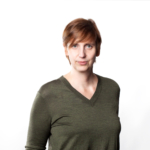After six months of design research on the informal spatial appropriation strategies of a socio-politically suppressed Malian community in a migrant housing facility in Paris, I established a dialogue with four refugees searching for a new center of life after their arrival in Germany.
Within a series of participatory workshops in Köln, we attempted to compare and contrast their current housing and living situation with their past conditions in the home country they have left. What are the spaces to unfold oneself, which areas are open for creative freedom, and what are the limitations of these new homes of a rather functional architecture? Under the supervision of Simon Meienberg and Heribert Weegen, the four men could over the course of five weeks visualize their memories, aspirations, and ideas. First, the exhibition focused on what has been left. How did the past homes look like? What memories, images, stories have prevailed the most? Subsequently these findings were juxtaposed with their current housing and living conditions in Köln. Is there any possibility to leave the architectural restraints of their new homes and rooms? Are there any opportunities to design these new spaces according to individual needs and individual aspirations, memories, and models? The result is a multi-perspective approach consisting of various drawings, models, stories, and design narratives.
This Masterthesis was supervised by Prof. Dr. Carolin Höfler (Design Theory and Research) and Prof. Philipp Heidkamp (Interface/ Interaction Design) and was supported by the research cluster “Real-Time City“, ArtAsyl e.V. and JACK IN THE BOX e.V.
Simon Meienberg, M.A. European Design / simon.meienberg@gmail.com
simon-meienberg.com / instagram; simonsdigest









